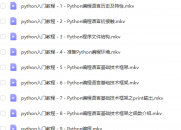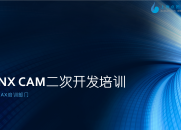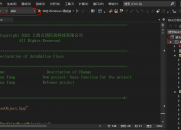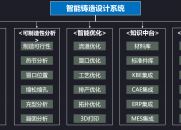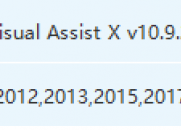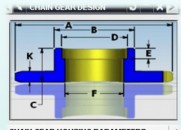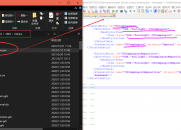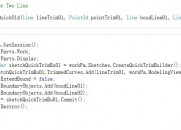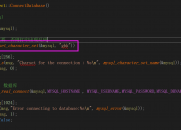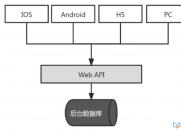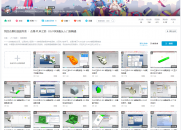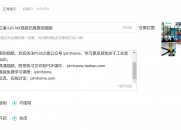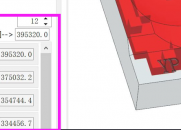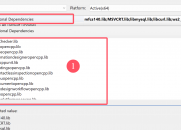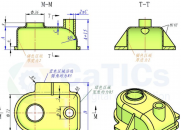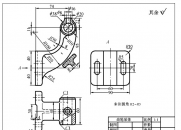|
|
请使用QQ关联注册PLM之家,学习更多关于内容,更多精彩原创视频供你学习!
您需要 登录 才可以下载或查看,没有账号?注册

x
http://www-cad.fnal.gov/PLMWorld2008/Teamcenter%20Unified/The%2520Network%2520is%2520Slow!.pdf
0 r t0 A0 j# {, b. o/ a, z4 a: ehttp://www.plmworld.org/p/bl/et/blogid=43&blogaid=218 q; J% _ F. n8 x
https://support.industrysoftware.automation.siemens.com/docs/teamcenter/Network_Performance_Tuning_V6.6.pdf$ w% I, y8 K# T
0 e# N8 Y6 U# a. s9 Y
Teamcenter is Slow! Teamcenter Performance Bottlenecks & Mitigation( N; ~: L! w% N. t
2 n; e2 U# v" w" t9 g* KLarry Carpenter# u6 C: V( s4 ?- p3 B4 s5 j
At the Chicago-Wisconsin RUG Fall Conference in October 2012, I gave a presentation on common Teamcenter performance issues and solutions along with listing, in one place, many other past Teamcenter performance presentations and white papers. It was very well received by a standing room crowd, so I thought I'd share it with the rest of the PLM World community. Here is a link to the presentation (you must be a TCUA SIG member to view it): http://www.plmworld.org/p/do/sd/sid=3758&type=0
. e& c. h! l4 {0 S @/ a; o; TFor those unwilling to join the TcUA SIG to view it, I wrote an abbreviated version here:
# {9 f" b# q8 P c* j4 F0 uWhy Performance Matters( H9 {& i& v7 F% B; `
• Productivity – doing more work with less
/ N( m! C9 J) f. `! [3 [3 |. vo Improve end user productivity8 E7 M2 M: b2 [ e/ D e
o Improves administrator productivity; ?4 q" l' u) P1 y
fewer help desk calls responding to or fixing preventable problems0 t1 ]) K) M% Y
• Reliability
/ ?; P+ ?4 U9 O Go A well tuned Teamcenter environment also improves system stability and uptime.1 r) s8 E( F" W9 W( e! j* m
o Less opportunity for data corruption
* ]6 o s0 v' G8 y2 T6 oo Fewer operational errors/problems; n6 r, g* N5 O& i/ f
• Cost Savings
* G% O3 v3 ?6 [2 a& po Less waiting means less time wasted.* h5 c: c2 e4 r
Quick Case Study: Company ‘S’
# Z. n. [4 ]) [9 ~Performance was so bad that something which used to take 10 minutes was taking 2 hours to do.Did pretty much everything wrong, performance-wise, at first but ultimately fixed every major problem. What took 2 hours now only takes 2 minutes.
$ c( L2 u7 T% N) DSee my March 2012 article on PLM World’s website for details:
/ r8 `4 ^% C0 q. BTeamcenter Performance – Hard-Earned Lessons: http://www.plmworld.org/p/bl/ar/blogaid=1522 R6 t) k6 s% `0 }- G$ K2 u7 B5 q
Common Performance Bottleneck Causes- T3 L% f1 [- r+ }- [$ }1 O/ g( D
Using OOTB settings — OOTB settings are intended for development environments; not production environments.
: F0 i5 x4 G) u: ?9 XOverloaded servers — Putting too much on a single server.0 B6 V8 \ M- O z
Operating system settings — Network settings most common (e.g. TCP parameters).
I; z8 J- u& H" }& ?' yLack of performance monitoring & tuning — Performance doesn’t improve all by itself. It requires human intervention to determine root cause and address it.# ^/ t5 C" l. {8 W2 e4 E R; s
Databases – The Most Likely Culprit
% z! n6 k3 L, S x9 [! ?• Database performance is highly sensitive to hardware, software, and DB configuration. h' o# k" d" E' g) D
• DBAs at companies generally don’t do performance monitoring and tuning of your Teamcenter DB.; D1 J/ @" Q# G+ w! P
• It’s typically the last place that Teamcenter administrators look for performance issues rather than the first.3 s/ \( C& W. \# g# j9 ^6 Q
Mitigating Database Server Bottlenecks
1 n0 {/ C, B' \/ M; G• Must use dedicated DB server
# |. d, ~( Q# C) s( Jo Do not use your DB server for anything other than your Teamcenter production database. This includes not serving additional databases from the same server.; N ?; s6 C) x V7 z
• Must have fast dedicated storage for DB files q2 ~$ ]2 v( ]2 {* T
o Avoid using a NAS device; especially a shared NAS. Use DAS (Direct Attached Storage) instead.
2 W4 W/ c+ `# G0 J4 h- O( Co Use multiple fast disk spindles partitioned with proper RAID levels according to the DB vendor & SPLM recommendations.
0 N' ~- J0 W. X1 s9 Ko Split DB data, temp, and log files across those RAID partitions according to DB vendor & SPLM recommendations.
' m6 s1 k1 ~4 ~* O1 N/ uo Use disk controllers with a battery/flash backed cache." `' l* C p! D
o Use multiple disk controllers if possible.
4 _+ _6 ]+ ?' o• Cram the RAM
" C( s9 s0 J7 k7 Lo Ideally should be greater than the database size or in-memory footprint. Otherwise disk swapping/paging will occur.
8 ^( r; D9 ?" F• Use 64-bit OS & DB software
$ t3 q: |; n# C8 z' o3 w" lo 32-bit software has severe limitations regardless of whether you use “/3G”, AWE, or PAE settings to access memory beyond 3-4G. It’s still a bottleneck.1 F8 U' }8 k& _$ b' V6 H, P( q
• Use a good quality network adapter(s)2 F, @+ K; }5 b! N2 j2 p- k; M8 z
o Often overlooked as potential source of bottleneck (e.g. packets/sec limitations). Consider multiple NICs “trunked” for better throughput.- Z5 R1 R {) H9 f
• DB maintenance tasks
6 K8 a. [7 n/ d7 \8 w' v: ^o Update statistics and rebuild indexes regularly.0 ^) Z3 c+ `$ ^2 w! E; K: ^
Common Teamcenter Server Bottleneck Causes; a t e7 p: y( Y- _
• Overloaded Tc Servers! Y* v* z) c5 N- ^0 Q$ M0 s
• Poor Web Tier Configuration4 t" k" {) b* u8 w0 _& f
• Poor FMS Configuration3 G: m8 n! s: |; i+ p
• Debugging Turned ON2 k; m3 l: ]9 @
• Rich Client using OOTB settings
2 c) P6 J3 b" [" [‘Unload’ Overloaded Teamcenter Servers
. R1 ~% l# K( z3 B: s+ z• Put Dispatcher modules on separate computers away from other Tc Servers.
, t( O( m1 O9 ~5 K4 i4 \• Separate the Web & Enterprise tiers from the Tc Corporate and Volume servers.7 @% _: t3 M, j0 ]
• Use load balancing for Middle Tier & FMS:
9 Y% r# B1 h6 o# \3 `o Use multiple Web/Enterprise Tier servers to open up potential hardware resource bottlenecks (e.g. CPU, RAM, network adapter I/O, disk I/O, MB bus, etc.). l6 R# V- W1 O7 g1 z
o Set up multiple FSC cache servers to take load off busy volume servers/storage.
q( K2 w! u4 R' Z5 ^2 N+ T# W2 H2 vWeb Tier Configuration
8 D3 X1 k. B8 t" G- V- b' I• Do not use port 80 or 8080
$ e: W, O6 d0 S% H: D* `3 Fo HTTP traffic on those ports is considered web browsing traffic and is therefore given lowest priority on any network. Can also cause randomly dropped connections.! \# h: V; q' X. ~- o
• Enable http compression if not using WAN acceleration
/ O4 M6 X. X; e- k" F, `1 Z& oo Must be done on both web server and on clients to take effect." y8 ]$ F# p7 k3 x1 `
• Change/tune OOTB settings for Web Server/App$ J0 {+ T; j5 H' t
o E.g. timeout values, max # of threads, Java memory, etc.2 h+ Y+ E1 D' X y N b% k' d
o Read tuning guides specific to your chosen web server/app, e9 y( @/ C' w2 @, N! y9 n
• Scale it up or sideways7 m; g/ V/ p& s+ B% `
o Add another web tier server, or increase # of work processes (e.g. Web Garden mode for IIS).8 H, b* S! u3 O
Common FMS Bottleneck Causes( b( k9 L) `" M! ^. s1 Y9 e9 I( Q8 [
• Data improperly routed8 L6 E+ T8 s. d- c/ O6 Y
o E.g. Forcing data to go through a remote FSC server over a WAN and back again over the same WAN instead of simply pulling it directly from a nearby Volume/cache server.& q: X+ g2 @' W! t( E" }- z2 L
• Using OOTB settings
3 o" y5 l0 ?: S" }$ U6 Qo For development purposes only, remember?
+ Y! C$ C$ ~/ H$ f2 }• Missing client IP address subnets* C1 D N+ ?) z% Z
• No load balancing" |2 J3 P+ c" _& V1 o7 w/ W( _- W
• Not using remote cache servers for WAN users' O- b: ]& `% V9 [$ N3 u
• Not using remote volume servers for WAN users
6 {1 l# I9 A# f$ N+ Y2 D2 h1 yFMS Configuration( \4 l% O2 _ c/ h( _# h
• Ensure routing is correct
- s/ n- T# g' v1 t& P3 E8 zo Between multiple FSC groups via entry/exit/link parameters
3 J7 j5 e# K( |: _( }- J# q+ V5 [, t+ ko Between clients and their assigned FSC servers by using complete and accurate ‘clientmap’ parameters for ALL clients.
9 O) E- K0 X3 u% ^7 Uo Use correct transport algorithms for LAN and WAN users.3 |$ L7 O3 E, @+ ]5 e9 A
• Tune FSC/FCC cache settings- I+ @7 \5 W4 m, _
o Simply picking a total read/write cache size is not enough.
/ m" R* ]$ U& E; ]4 S9 F! k: @o Read “Sizing the FMS fast cache” in the Teamcenter help documentation. There is also a FMS cache sizing tool available from the GTAC web site. Link to FMS Calculator
9 ]' T" h5 X: o, \# b• Ensure correct client maps: R3 ?0 m1 X% f! Y6 X. S/ t9 E7 Z- K
o Determine ALL potential client IP address ranges and where they are located. Don’t forget to account for VPN IP addresses." `8 d( i1 V. F" P# W# C" p
o Place client maps in the closest FSC group to their location.2 r5 o, ~$ k* K
• Use multiple FSCs for load balancing* {) M( T8 s0 v' w: H! P/ c! m
o Use “front-end” FSC cache servers to reduce load on Volume servers. (Requires disabling of FSC direct routing)
4 ]/ L; C& L) x7 x6 V7 ^o Use redundant FSC cache servers to load balance each other. Also provides fail-over.$ M3 ~2 S' e1 S8 I
• Place FSC cache servers close to users
+ c) ^+ v4 b5 b& T: qo Greatly improves read performance (load time) over a WAN for groups consuming shared data." X" i$ m/ Z8 g3 g7 m% P2 G: L5 S
• Place Volume servers close to users
1 ~& s: U: J N w8 @3 g! [o Use Store & Forward or at least place remote volumes near remote users. (Backups of remote volumes are critical)5 q; k3 X6 D: R1 X
o Greatly improve write performance (save time) over a WAN especially for CAD data.8 E3 A' p% f _2 s/ t6 j
• Prepopulate FSC caches
& z2 E7 l$ Y2 |' ?5 j2 x+ Po Run a nightly script to prepopulate shared data across FSC caches.5 T+ Y3 j) s& F8 R0 l( t/ C. A
Misc Teamcenter Changes7 c6 N' H" X, _' K2 r
• Disable logging and other debugging tools. Turn them on only when needed. Examples,
, w$ Y3 v! z3 f* `o TC_SECURITY_LOGGING=OFF: p( s9 j3 U- N& F$ `
o TC_APPLICATION_LOGGING=OFF
2 h+ V1 H8 e# \8 @$ F" ^o TC_SLOW_SQL=-1
6 P4 E$ O/ E. s* K. o• Rich Client ‘Teamcenter.ini’ configuration:+ f, ^0 `! P R* e8 l P
o Modify Teamcenter.ini file to increase Java Memory and other settings. Will improve performance/stability when perform large operations (CAD, PSE expansion, large Workflows).
* e% d5 ?3 Y: q6 b• Enable FCC File Warming
$ s4 x: i# t1 K% K" c N" [o Improve startup time by having FCC and Tc files pre-loaded at OS login.
4 V- ~. Y6 ~$ d; a" s7 W! eNetwork Performance. s! c1 ?' a6 v5 K' w
• Use a hardware-based WAN accelerator if using Teamcenter between multiple facilities over a WAN.! _& y% u- M. l5 R* ?8 g- x8 W
o If none then make best use of software-based Web server and FMS WAN acceleration settings. (i.e. http compression & FMS compression)+ z- b, B8 D1 \' F) e( N! D
• Optimize OS network settings! E$ v7 k' A# S" \+ v Y
o OOTB settings are insufficient1 k4 b- _# z. D$ Q4 u
o Applies to both servers and clients+ I4 K' q/ n j
o Examples, increasing # of tcp ports, disabling NAGLE algorithm, increasing buffer sizes, trunking multiple NICs, enabling Compound TCP, Large Windows Scaling1 a/ a) a( J. b. _+ r4 M
Recommended Server Changes (Windows)0 {. P8 @9 B0 b7 K! b5 _3 T
See Presentation.8 F1 ^* M* N' l& T
Recommended Client Changes (Windows)1 C- ^# P& u1 _. [
See Presentation.
+ d7 p6 w) ~ I! W, D- Y! DPerformance Monitoring Tools
?& T( ]: b, B3 {8 }• Some useful performance monitoring tools:& ^& S& ?1 {4 X! r; t' ]( |
• Performance Monitor (comes with Windows)
+ q, S5 W) i; ~! n; Q• Used to monitor OS, Teamcenter, and SQL use of resources
8 o' ^, v+ Q/ C( G- P• Wireshark (freeware network packet sniffer); N$ o; G( l" i0 N$ R2 K
• Used to help identify network TCP performance between computers.
- b5 z7 |/ N6 U+ T• Available at http://www.wireshark.org/& O1 P2 _+ P$ b; [' s
• Sysinternals Suite (free from Microsoft web site)4 _ \# W9 Y9 @# H6 x
• http://technet.microsoft.com/en-us/sysinternals/bb842062
S9 C% c& f8 X5 IReference Materials, A( M6 h; ^) y
• Available on GTAC Web Site @ http://support.industrysoftware.automation.siemens.com/docs/teamcenter/
7 Q" W# F: v/ F8 ?/ U% po Teamcenter Deployment Guide" E$ Y1 b5 M+ E
o Teamcenter Network Performance Tuning
7 Q% T" C% P. \$ O0 F+ Y* o* {o JBoss 4.2.2 Installation & Tuning Guide
" }/ Q" o/ x7 j6 R. `& `' U: Xo Optimizing Teamcenter Client Performance
! L1 _3 i4 S0 l6 A% L# C; Uo Teamcenter System Performance Analysis7 M! C& H* H0 W
• Oracle documentation & web sites+ \( y! J, {9 f. c
• MS SQL Server documentation in addition to:1 A# K& u5 |( M
o Best Practices for Running Siemens Teamcenter on SQL Server) }- T7 s& d% r2 A7 [% z
http://download.microsoft.com/download/7/3/6/7365D2BB-BB34-4D28-A128-F2C8FBA6E995/Siemens-Teamcenter-and-SQL-Server-Best-Practices.pdf
6 D9 ~+ i, }8 Mo Siemens Blog on Technet
' G0 z& {& _! [4 l6 l6 G http://blogs.technet.com/b/sql_server_isv/archive/tags/siemens/
1 x# F, d: V9 L/ n o, ^o Siemens-Teamcenter-SQL-Resource-Page9 B: c, _7 n& ~
http://blogs.technet.com/b/sql_server_isv/p/siemens-teamcenter-sql-server-resource-page.aspx
/ X+ u- g# s* w. h) L• Past PLM World Conference Presentations available at www.plmworld.org,
3 P/ z* f5 M5 k% N0 ]o Teamcenter 4-Tier Deployment – Best Practices
: j0 V6 g" e8 `; {7 ?9 E/ Lo Teamcenter – Database Performance
- T. h0 K/ E: B" ?o JBoss Optimization for Teamcenter
. i% o& |' j8 qo Optimizing Teamcenter Client Performance
; r) l* n" g' S p, S3 Bo Teamcenter Database Server Configuration & Tuning
' J4 S- n {- c, Z" S. \Contact Information
0 p7 H0 @% l% V4 h7 ?8 fLarry Carpenter P.E., PLM World Teamcenter SIG Chair, tcua@plmworld.org% V5 g/ V) f! B9 R' g. C
Teamcenter UA SIG: http://www.plmworld.org/TC_UA
9 F! G) q, I: I. ALinkedIn: http://www.linkedin.com/pub/larry-carpenter-pe/44/5b8/aaa
8 H) V# y n; _$ l' NAlternate Contact Info: ideas2nx@plmworld.org, larry.carpenter@siemens.com4 ?# {/ `2 L6 r M' {$ s' k
. e' D7 \) Q' r, h; v- _0 v
|
|
